Home>diy>Planning & Engineering>What Is Forest Zoning?
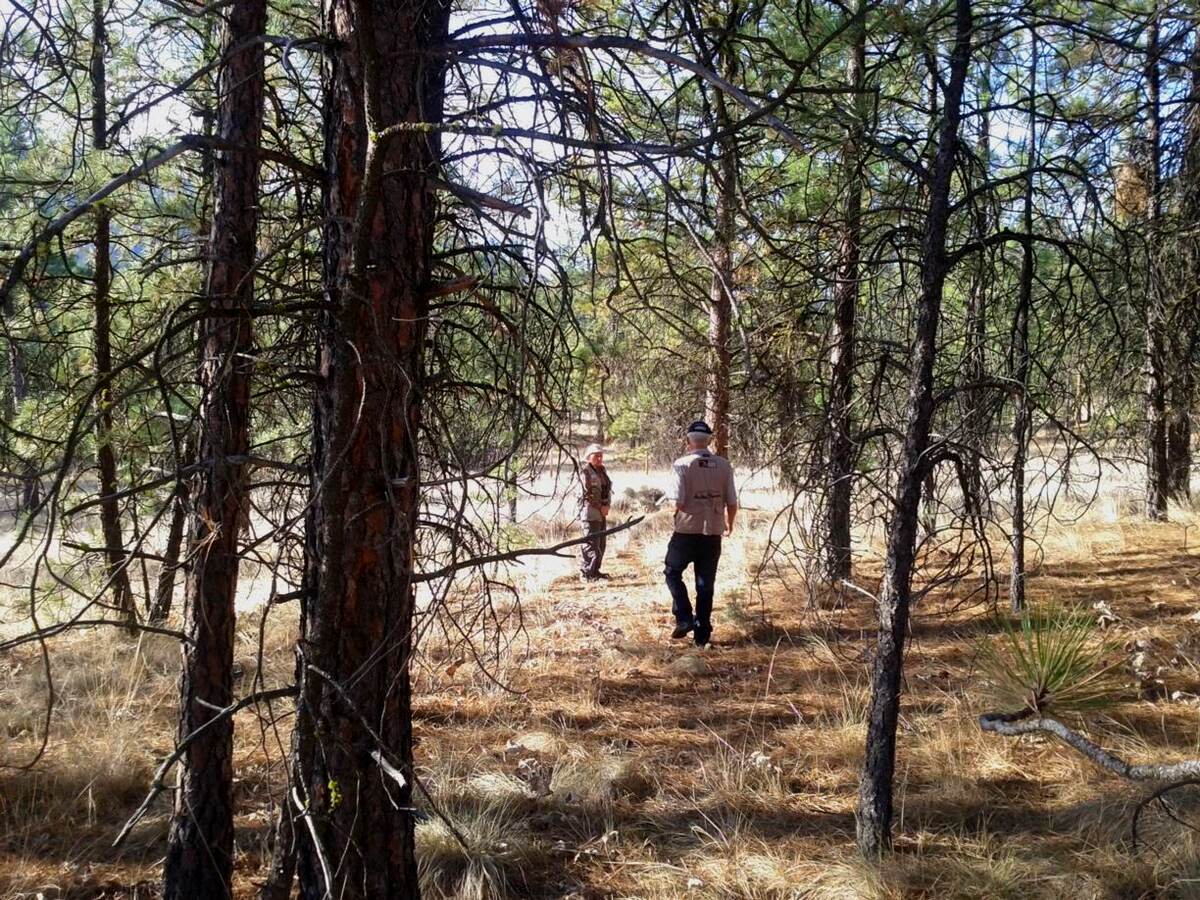

Planning & Engineering
What Is Forest Zoning?
Modified: December 7, 2023
Learn about forest zoning and its importance in the field of planning-engineering. Discover how this practice helps manage and protect forested areas effectively.
(Many of the links in this article redirect to a specific reviewed product. Your purchase of these products through affiliate links helps to generate commission for Storables.com, at no extra cost. Learn more)
Introduction
Forest zoning is a planning tool that aims to manage and regulate land use within forested areas. It involves the division of forested land into different zones or compartments, each with specific regulations and management objectives. Forest zoning is crucial for sustainable forest management, ensuring the conservation of biodiversity, provision of ecosystem services, and balancing the needs of different stakeholders.
Forests are invaluable resources, providing a multitude of benefits such as clean air and water, wildlife habitat, timber, and recreational opportunities. However, the increasing demand for land and resources poses significant challenges to the preservation and sustainable management of forests. Forest zoning plays a critical role in addressing these challenges by providing a framework for land-use planning and management.
The primary goal of forest zoning is to allocate suitable land uses to specific areas within a forest landscape. This is achieved by considering various factors such as ecological conditions, socio-economic needs, and cultural values. By zoning the forest, different activities such as timber harvesting, wildlife conservation, recreational activities, and scientific research can be effectively and sustainably integrated.
One of the key objectives of forest zoning is to ensure biodiversity conservation. Forests are home to a wide range of plant and animal species, many of which are endangered or threatened. By designating specific zones for biodiversity conservation, forest zoning helps protect critical habitats and ensures the survival and recovery of these species.
Another objective of forest zoning is to promote sustainable timber harvesting. By delineating designated timber extraction zones, forest zoning ensures that logging activities are carried out in a controlled and responsible manner. This helps prevent overexploitation and degradation of forest resources, ensuring their long-term availability for future generations.
Forest zoning also aims to facilitate recreational and tourism activities. By designating specific zones for recreational use, such as hiking trails, camping areas, or visitor centers, forest zoning enhances the visitor experience while minimizing impacts on sensitive habitats.
Additionally, forest zoning takes into account the needs and aspirations of local communities. It provides a mechanism for balancing competing land uses and ensuring equitable distribution of resources. By involving local stakeholders in the zoning process, their knowledge and perspectives are incorporated, leading to more informed and inclusive decisions.
In the following sections, we will delve deeper into the components of forest zoning, common practices, challenges faced during implementation, the role of stakeholders, and examples of successful forest zoning strategies.
Key Takeaways:
- Forest zoning is a crucial tool for balancing diverse needs in forest management, promoting sustainable resource use, conserving biodiversity, and enhancing recreational opportunities through strategic land use planning.
- Stakeholder engagement, adaptive management, and diverse zoning strategies are essential for successful forest zoning, ensuring the sustainable coexistence of multiple land uses and the preservation of forest ecosystems.
Definition of Forest Zoning
Forest zoning refers to the process of dividing forested land into distinct areas or zones, each with specific regulations and management objectives. It is a planning tool used to guide land use decisions and ensure the sustainable management of forest resources. Forest zoning takes into account a variety of factors, including ecological conditions, socio-economic considerations, and cultural values, to allocate suitable land uses to different areas within a forest landscape.
The purpose of forest zoning is to strike a balance between the various needs and interests associated with forests, such as biodiversity conservation, timber production, recreational activities, and ecosystem services. By delineating different zones based on these objectives, forest zoning enables the effective integration of multiple land uses while minimizing conflicts and negative impacts.
The boundaries of forest zones can be defined based on a range of criteria, including ecological characteristics, potential conflicts among land uses, and stakeholder input. For example, zones may be designated for core conservation areas, sustainable timber extraction, recreational activities, research and monitoring, or buffer zones to protect sensitive habitats.
Forest zoning is typically implemented through the development of land-use plans or forest management plans, which define the specific objectives, regulations, and activities allowed or prohibited in each zone. These plans are based on scientific assessments, socio-economic considerations, and consultation with stakeholders to ensure transparency and inclusiveness.
It is important to note that forest zoning is not a one-size-fits-all approach. The specific zoning strategies and regulations will vary depending on the unique characteristics of each forest and the desired outcomes. Ultimately, the aim of forest zoning is to promote sustainable land use practices, protect biodiversity, and meet the diverse needs of society.
Forest zoning is a dynamic process, subject to periodic review and adjustment to reflect changing environmental, social, and economic conditions. As knowledge and understanding of forests evolve, so too must the zoning strategies to ensure their continued effectiveness and relevance.
In the next sections, we will explore the purpose, objectives, benefits, and components of forest zoning in more detail. We will also discuss the implementation challenges and the role of stakeholders in the zoning process.
Purpose of Forest Zoning
The purpose of forest zoning is to provide a systematic and strategic approach to land use planning and management in forested areas. It serves as a tool to balance the diverse needs and interests associated with forests, including biodiversity conservation, sustainable timber production, recreational activities, and the provision of ecosystem services.
One of the primary purposes of forest zoning is to promote biodiversity conservation. Forests are home to a vast array of plant and animal species, many of which are unique and ecologically important. By designating specific zones for biodiversity conservation, forest zoning helps protect critical habitats, maintain ecological connectivity, and preserve the overall biodiversity of the forest ecosystem. This is essential for the long-term survival of species and the maintenance of healthy and resilient forest ecosystems.
Another purpose of forest zoning is to ensure sustainable timber production. Forests are a valuable source of timber, providing raw materials for various industries. However, unregulated and unsustainable logging can lead to deforestation, habitat destruction, and the depletion of forest resources. Forest zoning allows for the designation of timber production zones, where timber harvesting is carefully managed to ensure the long-term viability of forests and the sustainable extraction of timber.
Forest zoning also serves the purpose of enhancing recreational opportunities. Forests are popular destinations for outdoor activities such as hiking, camping, wildlife viewing, and nature photography. By designating specific zones for recreational use, forest zoning helps facilitate these activities while minimizing their impact on sensitive habitats. It ensures the availability of designated trails, campgrounds, and visitor centers, creating a harmonious relationship between forest conservation and recreational enjoyment.
Furthermore, the purpose of forest zoning is to safeguard ecosystem services. Forests provide a wide range of services that are essential for human well-being, including clean air and water, carbon sequestration, soil erosion control, and climate regulation. By adopting a zoning approach, forest managers can identify and protect areas that are critical for maintaining these services. For example, buffer zones can be established to protect water sources, while strict regulations can be implemented in areas prone to erosion or vulnerability to climate change.
Lastly, forest zoning serves as a means to manage conflicts and balance competing interests. By clearly defining the permitted land uses and activities within each zone, forest zoning helps reduce conflicts among stakeholders with different needs and expectations. It ensures that resources are allocated fairly and that the benefits derived from forests are shared equitably among various user groups.
Overall, the purpose of forest zoning is to promote the sustainable management of forest resources, protect biodiversity, enhance recreational opportunities, safeguard ecosystem services, and facilitate the coexistence of multiple land uses in a harmonious and balanced manner.
Objectives of Forest Zoning
The objectives of forest zoning are multi-dimensional and encompass various aspects of sustainable forest management. The primary goal is to provide a framework for balancing and integrating the diverse needs and interests associated with forests, while also ensuring the long-term health and viability of forest ecosystems. The following are the key objectives of forest zoning:
1. Biodiversity Conservation: One of the foremost objectives of forest zoning is to protect and conserve biodiversity. By designating specific zones for biodiversity conservation, such as protected areas, wildlife corridors, or habitat restoration zones, forest zoning aims to safeguard critical habitats and ensure the survival and recovery of endangered or threatened species. This objective is crucial for maintaining ecological balance, preserving genetic diversity, and safeguarding the long-term resilience of forest ecosystems.
2. Sustainable Resource Use: Forest zoning aims to promote sustainable resource use, including timber production, non-timber forest products, and ecosystem services. By designating specific zones for timber harvesting or other resource extraction activities, forest zoning helps regulate the intensity and location of these activities to prevent overexploitation and ensure the long-term availability of forest resources. It also encourages the utilization of sustainable practices that minimize environmental impacts and promote the regeneration and replenishment of forest resources.
3. Recreation and Tourism: Forests are valuable recreational and tourism destinations, offering opportunities for activities such as hiking, camping, wildlife watching, and nature photography. Forest zoning aims to designate specific zones for recreational use, providing amenities such as trails, picnic areas, and visitor centers, while also preserving sensitive habitats and minimizing disturbances. This objective allows for the enjoyment and appreciation of forests while maintaining their ecological integrity.
4. Ecosystem Services: Forests provide vital ecosystem services, including carbon sequestration, water filtration, soil erosion control, and climate regulation. Forest zoning aims to identify and protect areas that are critical for maintaining these services. For example, buffer zones may be established around water bodies to protect water quality, and sensitive areas prone to erosion or climate change vulnerability may be safeguarded. By preserving these ecosystem services, forest zoning contributes to the overall environmental health and well-being of surrounding communities.
5. Conservation of Cultural Values: Forests hold significant cultural value for indigenous communities and other local populations. Forest zoning recognizes and respects these cultural values by designating zones for cultural preservation or traditional land use. This objective involves the active involvement of indigenous communities and local stakeholders in the zoning process, ensuring their knowledge and perspectives are integrated into decision-making.
6. Conflict Resolution: Forest zoning serves as a tool for managing conflicts among various stakeholders with differing needs and interests. By clearly delineating zones and specifying permitted land uses and activities, forest zoning helps minimize conflicts and enhances cooperation and consensus among different user groups. This objective promotes equitable resource allocation and fosters collaboration and dialogue among stakeholders.
Overall, the objectives of forest zoning revolve around achieving sustainable forest management by conserving biodiversity, promoting sustainable resource use, enhancing recreational opportunities, preserving ecosystem services, respecting cultural values, and managing conflicts. These objectives guide the development and implementation of zoning strategies that are tailored to the specific context and needs of each forested area.
Benefits of Forest Zoning
Forest zoning offers numerous benefits in terms of sustainable land use planning, biodiversity conservation, economic development, and the overall well-being of communities. These benefits are essential for maintaining the health and productivity of forests, preserving biodiversity, and ensuring the provision of ecosystem services. The following are key benefits of forest zoning:
1. Sustainable Land Use: Forest zoning provides a systematic approach to land use planning, allowing for the designation of specific zones for different activities. This promotes sustainable land use practices by ensuring that activities such as timber harvesting, recreation, and conservation are carried out in a coordinated and responsible manner. Through zoning, conflicts between incompatible land uses can be minimized, leading to more sustainable and harmonious development within forested areas.
2. Biodiversity Conservation: One of the primary benefits of forest zoning is the conservation of biodiversity. By designating specific zones for conservation purposes, such as protected areas, wildlife corridors, or habitat restoration zones, forest zoning helps safeguard critical habitats and protect endangered or threatened species. This benefit is crucial for maintaining ecological balance, preserving genetic diversity, and ensuring the long-term survival of plant and animal species within forests.
3. Ecosystem Services: Forests provide a wide range of ecosystem services, including carbon sequestration, water filtration, soil erosion control, and climate regulation. Forest zoning helps identify and protect areas that are vital for delivering these services. By maintaining the integrity of these ecosystem services, forest zoning contributes to the well-being of surrounding communities by providing clean air and water, mitigating climate change impacts, and enhancing overall environmental quality.
4. Sustainable Resource Management: Forest zoning plays a crucial role in sustainable resource management. By designating specific zones for timber production, non-timber forest products, or other resource extraction activities, forest zoning ensures that these activities are carried out in a controlled and sustainable manner. This helps prevent overexploitation and degradation of forest resources, ensuring their long-term availability for future generations.
5. Economic Opportunities: Forest zoning can provide economic benefits to communities by creating opportunities for forest-based industries, recreational tourism, and sustainable livelihoods. By designating zones for specific economic activities, such as logging or eco-tourism, forest zoning helps stimulate local economies, generate employment, and promote sustainable income streams from forest resources.
6. Recreational and Cultural Value: Forests are important recreational and cultural spaces for communities. Forest zoning ensures the provision of designated zones for recreational activities, such as hiking trails, camping areas, and visitor centers, while also respecting and preserving cultural values and traditional land use. This benefit enhances the quality of life for local communities and provides opportunities for recreation, education, and cultural enrichment.
7. Improved Collaboration and Stakeholder Engagement: Forest zoning encourages collaboration and engagement among stakeholders by involving them in the zoning process. This promotes dialogue, consultation, and the integration of diverse perspectives, leading to more informed and inclusive decision-making. By fostering cooperation and partnerships, forest zoning helps build strong relationships among stakeholders, which are crucial for effective forest management and conflict resolution.
8. Enhanced Resilience to Climate Change: Forest zoning can contribute to the resilience of forests in the face of climate change. By designating buffer zones, protecting sensitive areas, and promoting sustainable land use practices, forest zoning helps mitigate the impacts of climate change, such as increased flooding, drought, or wildfire risks. This benefit enhances the long-term adaptability and resilience of forests to changing environmental conditions.
Overall, forest zoning provides a framework for sustainable land use, biodiversity conservation, ecosystem services, and economic opportunities. By guiding and regulating human activities within forested areas, forest zoning ensures that forests can continue to provide vital benefits to both present and future generations.
Read more: What Eats Grass In The Forest
Components of Forest Zoning
Forest zoning involves various components that collectively form the framework for allocating land uses and managing activities within a forested area. These components are designed to achieve specific objectives such as biodiversity conservation, sustainable resource management, and the coexistence of multiple land uses. The following are key components of forest zoning:
1. Classification of Zones: The first component of forest zoning is the classification of different zones within the forested area. This involves dividing the land into distinct areas based on their characteristics, ecological values, and intended land uses. Common zone classifications include conservation zones, sustainable timber production zones, recreational zones, buffer zones, and cultural preservation zones. Each zone is defined by its specific objectives, regulations, and permitted activities.
2. Zoning Objectives and Criteria: Forest zoning is guided by specific objectives and criteria that reflect the desired outcomes for each zone. These objectives may include biodiversity conservation, sustainable resource use, recreational opportunities, ecosystem services provision, and cultural preservation. The criteria used to determine the boundaries and regulations of each zone may incorporate ecological factors, socio-economic considerations, stakeholder input, and cultural values. The objectives and criteria provide a foundation for making informed decisions about land use allocation within the forested area.
3. Regulations and Land Use Guidelines: Forest zoning involves the development of regulations and land use guidelines for each zone. These regulations specify the permitted and prohibited activities, the intensity or scale of land uses, and the management practices that need to be followed within each zone. The regulations may include restrictions on logging, hunting, development, or recreational activities depending on the objectives of the zone. Land use guidelines provide additional guidance on best practices, minimum standards, and specific management measures for each land use activity within the zone.
4. Mapping and Spatial Planning: Mapping is a crucial component of forest zoning as it involves the visualization and delineation of different zones. Spatial planning tools, such as Geographic Information Systems (GIS), are used to define the boundaries of each zone and create maps that represent the zoning scheme. The maps help stakeholders and land managers understand the spatial arrangement of different zones, enabling them to make informed decisions regarding land use planning and management activities.
5. Monitoring and Evaluation: Monitoring and evaluation form an essential component of forest zoning to assess the effectiveness and performance of the zoning scheme. This involves regularly monitoring the ecological, social, and economic indicators within each zone to determine whether the desired outcomes are being achieved. Monitoring may involve tracking changes in biodiversity, timber yields, visitor numbers, or water quality, among other parameters. Evaluation helps identify any gaps or shortcomings in the zoning plan, allowing for adaptive management and potential adjustments to improve its effectiveness.
6. Stakeholder Engagement: Stakeholder engagement is a critical component of forest zoning, as it ensures inclusivity and incorporates diverse perspectives and knowledge. Engaging with local communities, indigenous groups, government agencies, NGOs, and other relevant stakeholders helps gather input and build consensus during the development and implementation of the zoning plan. Engaging stakeholders fosters collaboration, promotes transparency, and ensures that the zoning scheme takes into account the needs and aspirations of all affected parties.
7. Adaptive Management: Forest zoning should include mechanisms for adaptive management, allowing for adjustments and refinements as new information or circumstances arise. This component recognizes the dynamic nature of forests and the need to adapt to changes in ecological conditions, stakeholder expectations, or evolving management practices. Adaptive management involves regular reviews, feedback loops, and the incorporation of new scientific findings to ensure that the zoning scheme remains relevant and effective over time.
By considering these components when developing and implementing a forest zoning plan, land managers and stakeholders enhance the chances of achieving the desired objectives while maintaining the sustainable use and conservation of forest resources.
Forest zoning is the practice of designating specific areas within a forest for different uses, such as conservation, recreation, or timber harvesting. It helps to manage and protect the diverse resources within a forest.
Forest Zoning Practices
Forest zoning practices encompass a range of approaches and strategies that are employed to implement and manage forest zoning systems effectively. These practices take into account the unique characteristics of each forested area, the desired objectives, available resources, and the needs and aspirations of stakeholders. The following are common forest zoning practices:
1. Ecological Assessments: To establish an effective forest zoning system, it is crucial to conduct comprehensive ecological assessments of the forested area. These assessments involve studying the biodiversity, ecological processes, and habitat conditions to identify areas of high conservation value, unique ecological features, or critical habitats. This information forms the basis for the designation of specific zones and the development of regulations and management practices tailored to the ecological needs of the forest.
2. Stakeholder Participation: Engaging stakeholders, including local communities, indigenous groups, government agencies, NGOs, and the private sector, is key to the success of forest zoning. By involving stakeholders in the zoning process, their perspectives, knowledge, and aspirations are integrated, leading to more informed and context-specific decision-making. Stakeholder participation fosters collaboration, builds trust, and enhances the legitimacy and acceptance of the zoning plan.
3. Integration of Traditional Knowledge: Forest zoning practices may involve incorporating traditional ecological knowledge and cultural values of indigenous communities and local populations. This integration helps ensure that zoning plans respect and preserve traditional land uses, cultural practices, and the sustainable management practices developed by local communities over generations. It also contributes to the overall ecological health and resilience of the forest ecosystem.
4. Zoning Boundaries and Mapping: Clearly defining the boundaries of each zone within the forested area is critical to effective forest zoning. This involves using mapping tools, such as Geographic Information Systems (GIS), to create accurate and detailed maps that provide a visual representation of the zoning scheme. These maps help stakeholders and land managers understand and communicate the designated zones, aiding in land use planning, decision-making, and monitoring.
5. Regulations and Enforcement: Forest zoning relies on the establishment of regulations and guidelines that outline the permitted and prohibited activities within each zone. These regulations may govern timber harvesting, recreational activities, research permits, or land development. It is crucial to have effective enforcement mechanisms and monitoring systems in place to ensure compliance with the regulations. Regular monitoring helps identify any violations or non-compliance and allows for corrective actions to be taken.
6. Adaptive Management: Forest zoning practices should embrace adaptive management principles, which involve ongoing monitoring, evaluation, and adjustment of the zoning plan as new information or circumstances arise. This ensures that the zoning system remains relevant and effective over time and can respond to changing ecological conditions, stakeholder needs, or management practices. Regular reviews and feedback loops help identify any shortcomings or areas for improvement, enhancing the adaptive capacity of the zoning plan.
7. Capacity Building and Training: Building the capacity of forest managers, stakeholders, and local communities is essential for the successful implementation of forest zoning. Capacity-building efforts may include training programs, workshops, knowledge exchanges, and the dissemination of information about the zoning system, its objectives, and regulations. This helps enhance understanding, awareness, and ownership among stakeholders, leading to more effective participation and compliance.
8. Monitoring and Evaluation: Continuous monitoring and evaluation are integral to forest zoning practices. Regular assessments help determine whether the zoning scheme is achieving its desired objectives, such as biodiversity conservation or sustainable resource management. Monitoring may involve ecological surveys, data collection on timber yields, visitor numbers, or water quality, among other parameters. Evaluation helps identify any gaps or shortcomings and allows for adaptive management and potential adjustments to the zoning plan.
By incorporating these forest zoning practices into the planning and implementation process, land managers and stakeholders can establish effective and adaptive zoning systems that promote sustainable land use, biodiversity conservation, and the well-being of surrounding communities.
Challenges in Implementing Forest Zoning
While forest zoning is an essential tool for sustainable land use planning and management, its implementation can face various challenges. These challenges arise due to the complex nature of balancing multiple objectives, the diverse needs of stakeholders, and the dynamic characteristics of forest ecosystems. The following are common challenges faced in implementing forest zoning:
1. Conflict of Stakeholder Interests: Forest zoning involves reconciling conflicting interests among various stakeholders, such as conservationists, loggers, local communities, recreational users, and indigenous groups. Each stakeholder group may have different priorities and perspectives on land use, leading to disagreements and potential conflicts. Achieving a consensus among diverse stakeholders requires effective communication, engagement, and negotiation.
2. Lack of Data and Ecological Knowledge: Implementing forest zoning requires accurate and up-to-date data on ecological conditions, biodiversity hotspots, and habitat connectivity. However, data gaps and limited ecological knowledge can pose challenges in identifying and mapping zones accurately. Insufficient data regarding rare or threatened species, ecosystem dynamics, or the impacts of different land uses can undermine the effectiveness of zoning decisions.
3. Inadequate Resources and Capacity: Successful implementation of forest zoning requires adequate financial resources, skilled personnel, and institutional capacity. Insufficient funding, limited technical expertise, and weak institutional support can hinder the effective enforcement of zoning regulations, monitoring systems, and public outreach efforts. Capacity-building initiatives are vital to address these challenges and empower stakeholders in understanding and implementing zoning practices.
4. Land Use Conflicts and Encroachment: Forested areas are often subject to conflicting land uses, including agriculture, infrastructure development, and urbanization. These competing demands can lead to encroachment and illegal activities within forest zones, challenging the integrity of zoning regulations. Effective law enforcement, land tenure security, and community awareness are crucial in mitigating land use conflicts and preventing encroachment.
5. Limited Stakeholder Participation: Inadequate stakeholder engagement and limited participation in the zoning process can result in a lack of understanding, awareness, and buy-in from affected communities. Without inclusive participation, zoning decisions may not reflect the diverse needs and perspectives of local stakeholders, which can undermine the legitimacy and acceptance of the zoning scheme. Encouraging meaningful stakeholder engagement through information sharing, capacity building, and fostering partnerships is essential in addressing this challenge.
6. Adapting to Climate Change: Climate change poses additional challenges in forest zoning implementation. Changing climatic conditions can alter the suitability of certain areas for specific land uses, necessitating adjustments to zoning boundaries or objectives. The need to consider climate change impacts, such as increased fire risk or habitat shifts, requires ongoing monitoring and adaptive management practices within the zoning framework.
7. Limited Awareness and Compliance: Lack of public awareness and understanding of zoning regulations and objectives can contribute to non-compliance and ineffective enforcement. Insufficient outreach and education programs may result in low levels of compliance with zoning regulations or misinterpretation of zoning boundaries. Improving public awareness through targeted communication, community involvement, and education initiatives is crucial for enhancing compliance and the successful implementation of zoning measures.
8. Political and Policy Barriers: Implementation of forest zoning can face political and policy barriers, including resistance from powerful interest groups or conflicting policy priorities. Changes in political leadership or shifts in policy direction can impact the continuity and effectiveness of zoning initiatives. Aligning zoning objectives with national or regional policies, promoting evidence-based decision-making, and promoting long-term commitment to zoning practices are key to overcoming such barriers.
Addressing these challenges requires a multi-faceted approach that includes strong governance, effective stakeholder engagement, capacity-building efforts, adaptive management practices, and supportive policy frameworks. By proactively addressing these challenges, forest zoning can be better implemented for the sustainable management and conservation of forest resources.
Role of Stakeholders in Forest Zoning
Stakeholders play a crucial role in the successful implementation of forest zoning. Their involvement is essential in developing a comprehensive and inclusive zoning plan that considers the diverse needs and perspectives of different groups. The active participation of stakeholders ensures that zoning decisions are well-informed, transparent, and reflective of the interests and values of those who are directly affected by the forested area. The following highlights the key roles of stakeholders in forest zoning:
1. Local Communities and Indigenous Groups: Local communities and indigenous groups have unique knowledge and cultural practices associated with the forest. Their involvement is important in understanding traditional land uses, cultural values, and ecological knowledge that can inform the zoning process. These stakeholders can provide valuable insights into sustainable resource management, conservation practices, and ecosystem services. Ensuring their participation and respect for their rights are essential in developing a zoning plan that is inclusive and sensitive to local needs and aspirations.
2. Government Agencies: Government agencies, at both national and local levels, have a significant role in forest zoning. They provide the legal and regulatory framework within which zoning decisions are made. Government agencies are responsible for establishing policies, laws, and regulations that guide the zoning process, define land tenure rights, and enforce zoning regulations. They also provide technical expertise, support, and resources needed for effective zoning implementation.
3. Non-Governmental Organizations (NGOs): NGOs and civil society organizations often play an important role in advocating for sustainable forest management and conservation. They contribute to the zoning process by providing expertise, conducting research, and representing the interests of marginalized groups or specific conservation objectives. NGOs can participate in consultations, raise awareness among communities, and monitor the implementation of zoning regulations to ensure compliance and promote inclusive decision-making.
4. Academia and Research Institutions: Academia and research institutions contribute valuable scientific knowledge and expertise to the zoning process. They conduct research on forest ecology, biodiversity, land-use planning, and socio-economic aspects of forest management. Through their studies, they provide evidence-based recommendations and support informed decision-making during the development and revision of zoning plans. Research institutions also contribute to monitoring and evaluation efforts to assess the effectiveness and impact of zoning measures.
5. Private Sector: The private sector, including forestry companies, conservation organizations, and ecotourism operators, has a stake in forest zoning due to its economic and social interests. Private sector actors can contribute by adopting and promoting sustainable practices, investing in eco-friendly initiatives, and complying with zoning regulations. Their involvement can foster collaboration, innovation, and responsible use of forest resources while ensuring economic development and job creation.
6. Local and International Communities: Forests have global importance, as they contribute to climate regulation, biodiversity conservation, and the well-being of communities beyond national boundaries. International organizations, donor agencies, and global initiatives often support forest zoning efforts through funding, technical assistance, and capacity-building programs. Collaborations and partnerships between local and international communities contribute to knowledge exchange, best practices, and shared governance frameworks that strengthen the effectiveness and impact of forest zoning.
7. Public and General Public: The general public has a stake in forest zoning as forests provide various socio-economic benefits, recreational opportunities, and ecosystem services. Public engagement is essential to raise awareness about the importance of forests, zoning objectives, and the need for sustainable practices. Public participation allows individuals to express their preferences, concerns, and ideas, and helps foster a sense of ownership and accountability in managing forest resources.
The role of stakeholders in forest zoning is not limited to their participation; it also extends to collaboration, knowledge sharing, and accountability. Genuine stakeholder engagement is crucial for developing a shared vision, building trust, and ensuring the successful implementation and long-term sustainability of forest zoning efforts. Through their collective involvement, stakeholders contribute to the creation of zoning plans that are more socially acceptable, ecologically sound, and economically viable, leading to improved forest management and conservation outcomes.
Read more: What Is Zoning For Multifamily
Examples of Forest Zoning Strategies
Forest zoning strategies vary depending on the specific objectives, ecological conditions, and socio-economic contexts of each forested area. The following examples highlight different approaches and practices used in forest zoning around the world:
1. Multiple-Use Zoning: Multiple-use zoning aims to allocate different land uses within a forested area to maximize the benefits while minimizing conflicts. This strategy involves designating distinct zones for timber production, conservation, recreational activities, and cultural preservation. For example, in some forested areas, specific zones may be designated for sustainable timber harvesting, while other areas may be allocated for wildlife conservation or tourism activities. Multiple-use zoning ensures a balanced approach to land use planning and management, allowing for the coexistence of various ecological and socio-economic objectives.
2. Core-Buffer-Transition Approach: The core-buffer-transition approach involves dividing a forested area into three major zones: a core zone, a buffer zone, and a transition zone. The core zone is designated for strict conservation and protection of critical habitats and sensitive species. The buffer zone surrounds the core zone and serves as a transitional area, allowing for limited human activities that are compatible with conservation objectives. The transition zone is the outermost zone, where more intensive activities such as sustainable timber harvesting or recreational activities may be permitted. This approach ensures the protection of important ecological values while allowing for sustainable resource use and human activities in designated areas.
3. Zoning Based on Ecological Characteristics: This approach involves zoning based on the unique ecological characteristics and sensitivities of a forested area. Different ecological zones are designated based on factors such as soil types, vegetation types, topography, or wildlife habitats. For example, wetland areas or riparian zones may be protected or designated as habitat corridors, while upland areas may be designated for sustainable timber production or recreational activities. Zoning based on ecological characteristics ensures that land uses are aligned with the specific conditions and needs of different parts of the forest.
4. Community-Based Zoning: Community-based zoning involves actively engaging local communities and indigenous groups in the zoning process. This approach recognizes the traditional knowledge, cultural values, and rights of local communities over their forest resources. Communities actively participate in zoning decisions, contributing their ecological knowledge and traditional land-use practices. This approach ensures that zoning plans incorporate the needs and aspirations of local communities, leading to more sustainable and socially equitable management of forest resources.
5. Protected Area Zoning: Protected area zoning involves designating specific zones within a forested area for different levels of protection. This strategy may include strict nature reserves, wilderness areas, and wildlife sanctuaries, where human activities are strictly limited or prohibited. Other zones may allow for controlled ecotourism, research, or sustainable community-based resource management. The goal is to protect critical habitats and biodiversity while allowing for limited sustainable use and human activities in designated areas.
6. Strategic Landscape Zoning: Strategic landscape zoning looks beyond the boundaries of individual forested areas and considers the broader landscape context. This approach involves zoning at a larger scale, taking into account connectivity, habitat corridors, and ecological processes across multiple forested areas. The zoning plan aims to ensure the conservation of ecological networks, maintain connectivity for wildlife, and protect key landscape features. Strategic landscape zoning facilitates a coordinated approach to land use planning and ecosystem management.
7. Zoning for Climate Change Mitigation: Zoning strategies can also incorporate considerations for climate change mitigation and adaptation. This may involve designating specific zones for carbon sequestration, restoration of degraded areas, or protection of vulnerable ecosystems. For example, wetlands and forested areas with high carbon sequestration potential may be assigned special protection or restoration zones. This approach recognizes the role of forests in climate change mitigation and helps enhance their resilience to changing climatic conditions.
These examples highlight the diverse approaches and strategies used in forest zoning. Each strategy is tailored to the specific characteristics and objectives of the forested area, ensuring the sustainable management and conservation of forest resources while addressing the needs of various stakeholders and societal demands.
Conclusion
Forest zoning plays a crucial role in the sustainable management and conservation of forested areas. It provides a comprehensive framework for allocating land uses, managing activities, and balancing the diverse needs and interests associated with forests. By dividing forested land into different zones based on specific objectives and regulations, forest zoning ensures the protection of biodiversity, the sustainable use of resources, the provision of ecosystem services, and the promotion of recreational opportunities.
The components of forest zoning, such as classification of zones, zoning objectives and criteria, regulations and land use guidelines, mapping, and monitoring and evaluation, form the foundation for effective implementation. These components are guided by the active involvement of stakeholders, including local communities, indigenous groups, government agencies, NGOs, research institutions, and the private sector. Stakeholders play a vital role in providing local knowledge, contributing to decision-making, ensuring compliance with zoning regulations, and fostering collaborative relationships that enhance the effectiveness and legitimacy of the zoning process.
Despite the benefits of forest zoning, its implementation can face numerous challenges. Conflicting stakeholder interests, limited resources and capacity, land use conflicts, climate change impacts, and policy barriers can pose obstacles in the zoning process. Overcoming these challenges requires effective stakeholder engagement, capacity building, adaptive management practices, and supportive policy frameworks.
Examples of forest zoning strategies demonstrate the diverse approaches employed worldwide. From multiple-use zoning and core-buffer-transition approaches to community-based zoning and strategic landscape zoning, these strategies reflect the unique characteristics of the forested areas and the desired objectives of zoning plans. Each strategy aims to achieve sustainable forest management, biodiversity conservation, and the coexistence of multiple land uses.
In conclusion, forest zoning is a crucial tool for sustainable land use planning and management. By integrating ecological, social, economic, and cultural considerations, forest zoning ensures the long-term health and productivity of forests, the preservation of biodiversity, and the provision of ecosystem services. The active participation of stakeholders, the adoption of adaptive management practices, and the commitment to inclusive decision-making are key to the successful implementation of forest zoning. Through effective zoning practices, forests can continue to provide invaluable benefits to present and future generations while maintaining their ecological integrity.
Frequently Asked Questions about What Is Forest Zoning?
Was this page helpful?
At Storables.com, we guarantee accurate and reliable information. Our content, validated by Expert Board Contributors, is crafted following stringent Editorial Policies. We're committed to providing you with well-researched, expert-backed insights for all your informational needs.
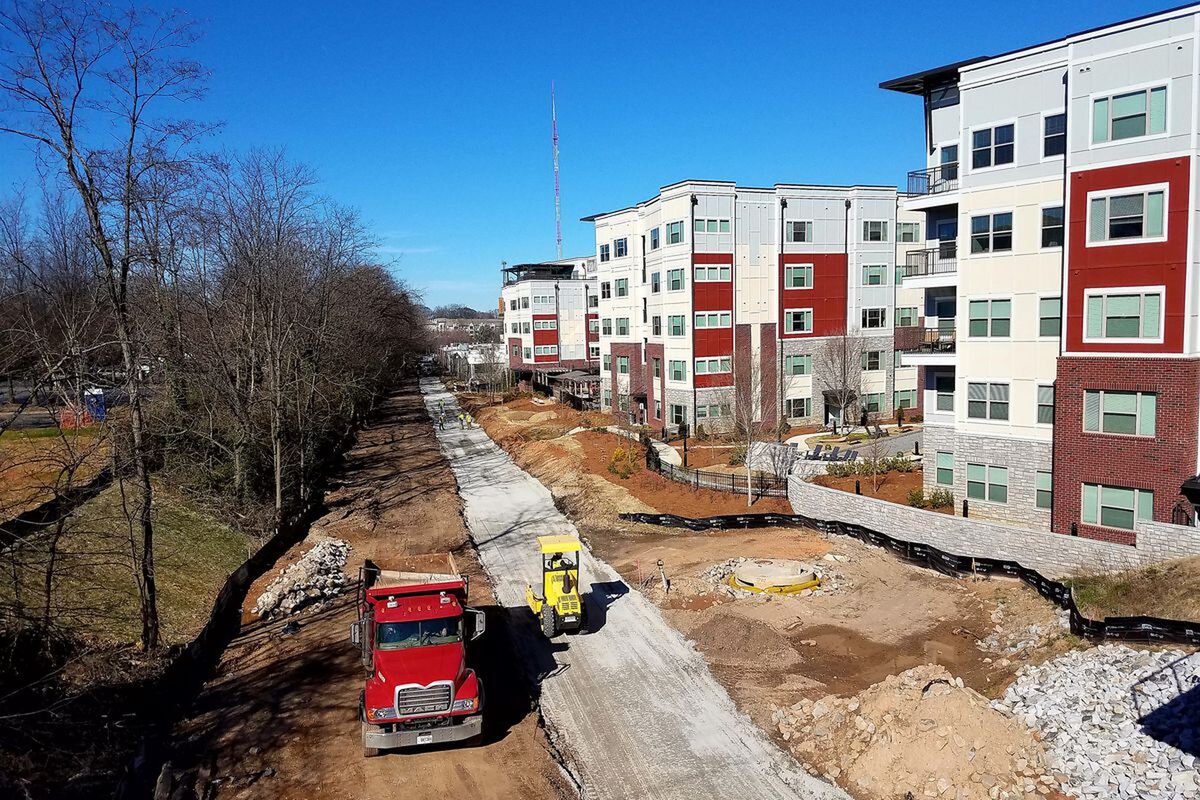
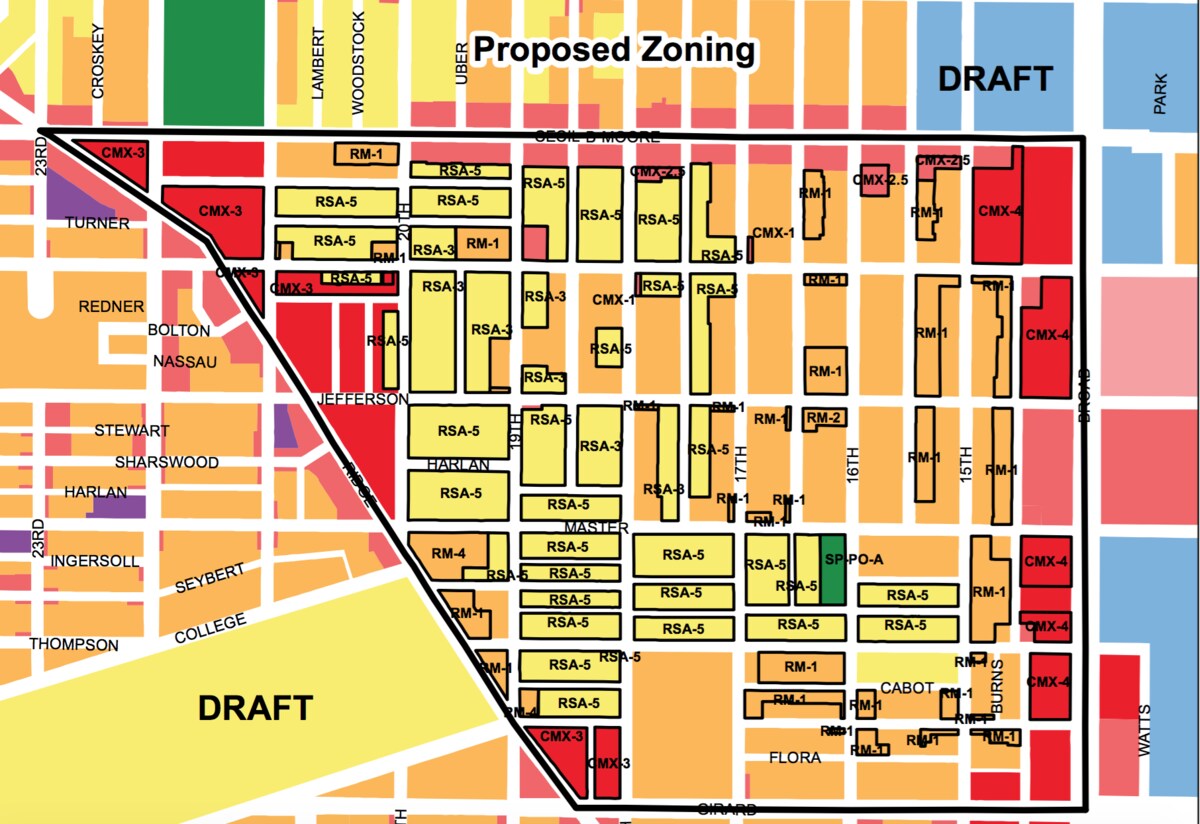
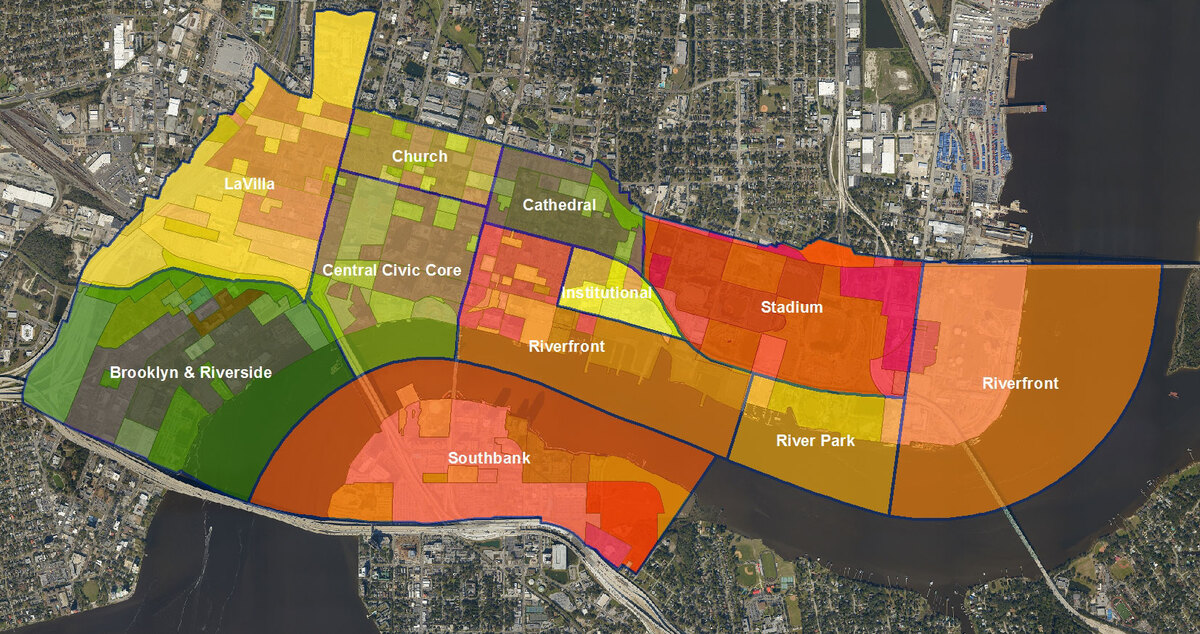

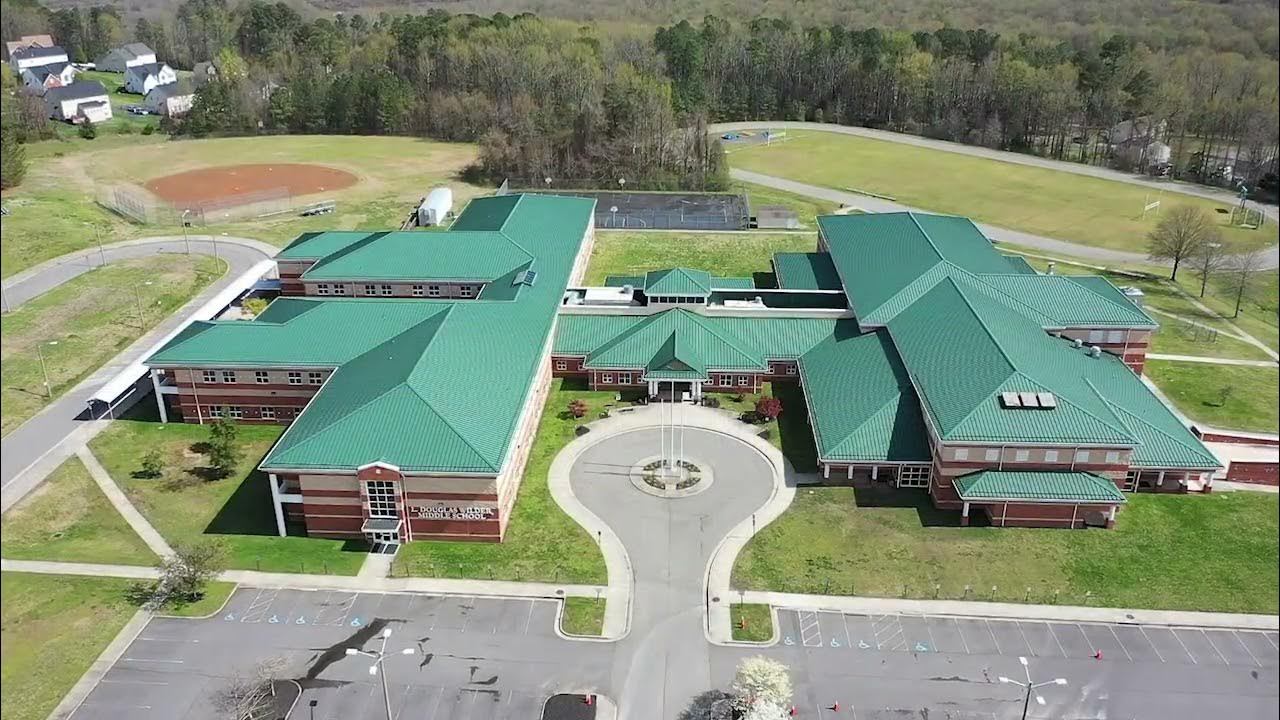

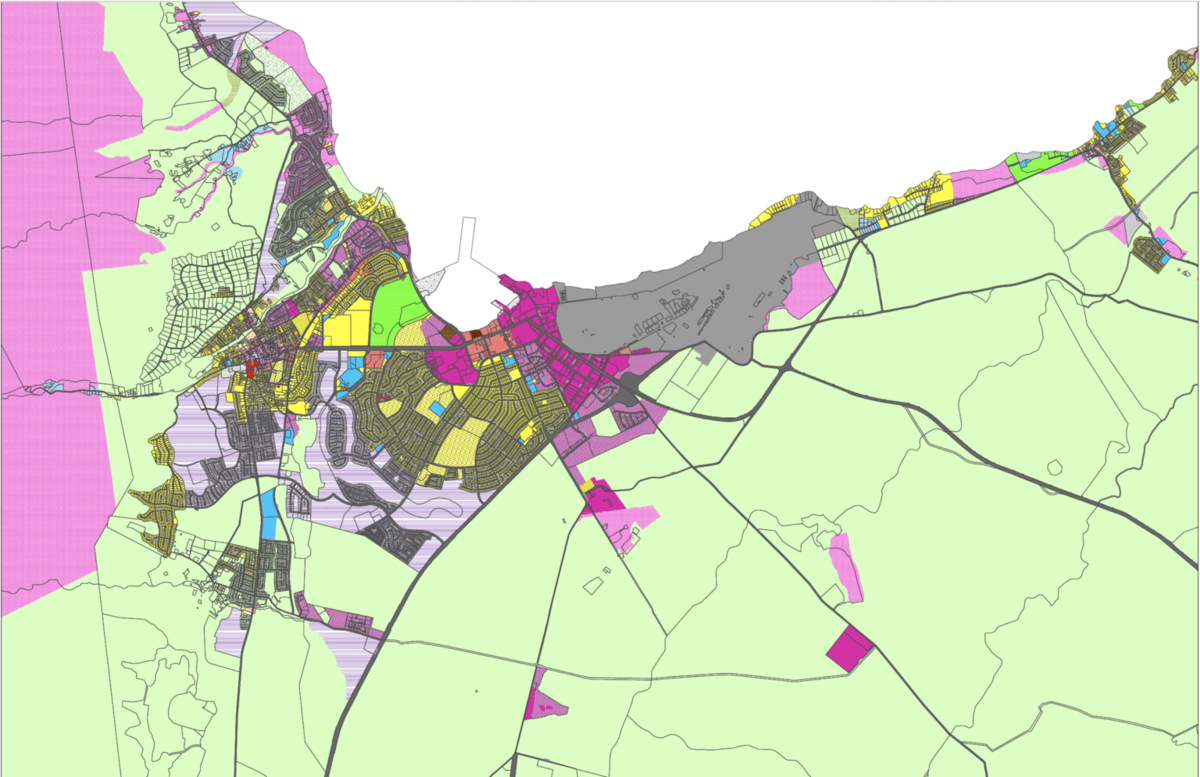


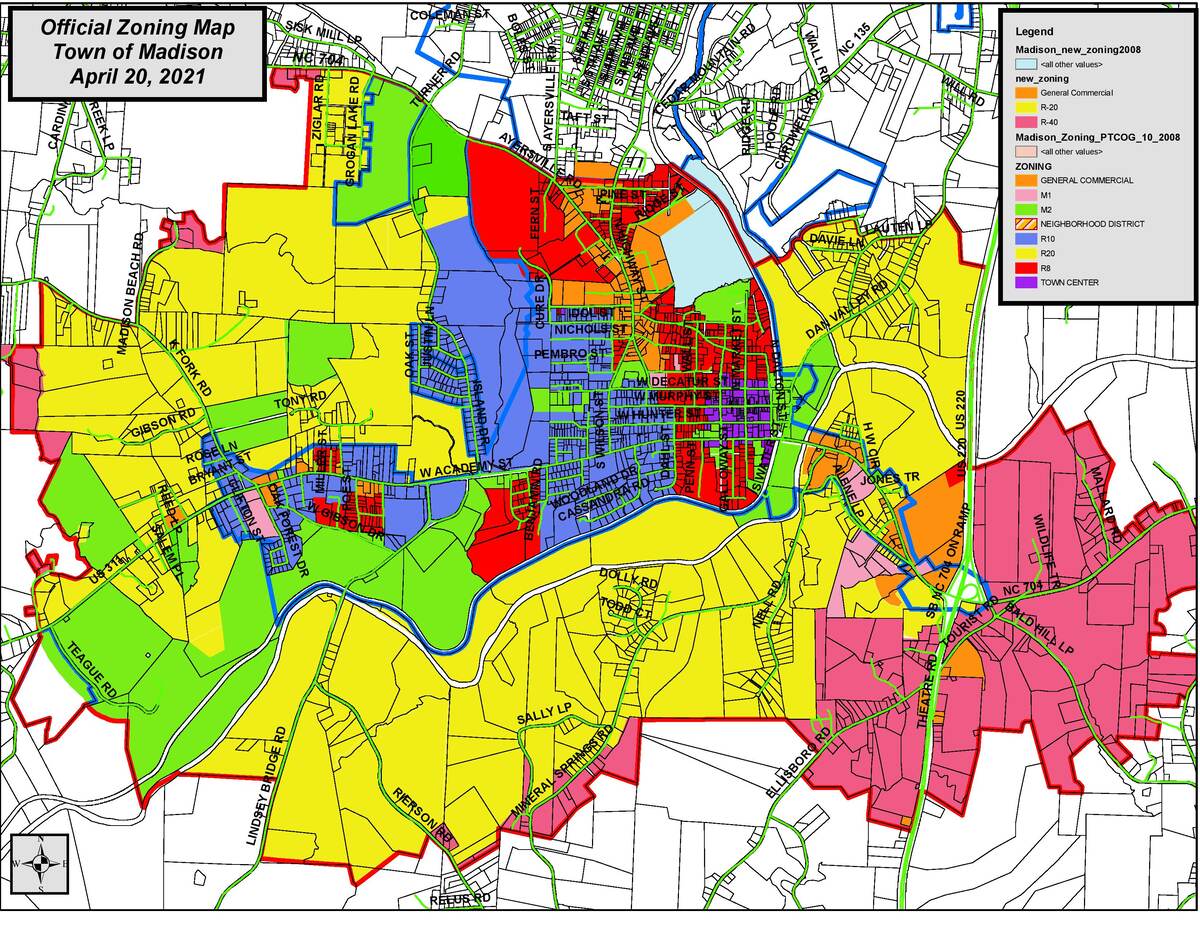


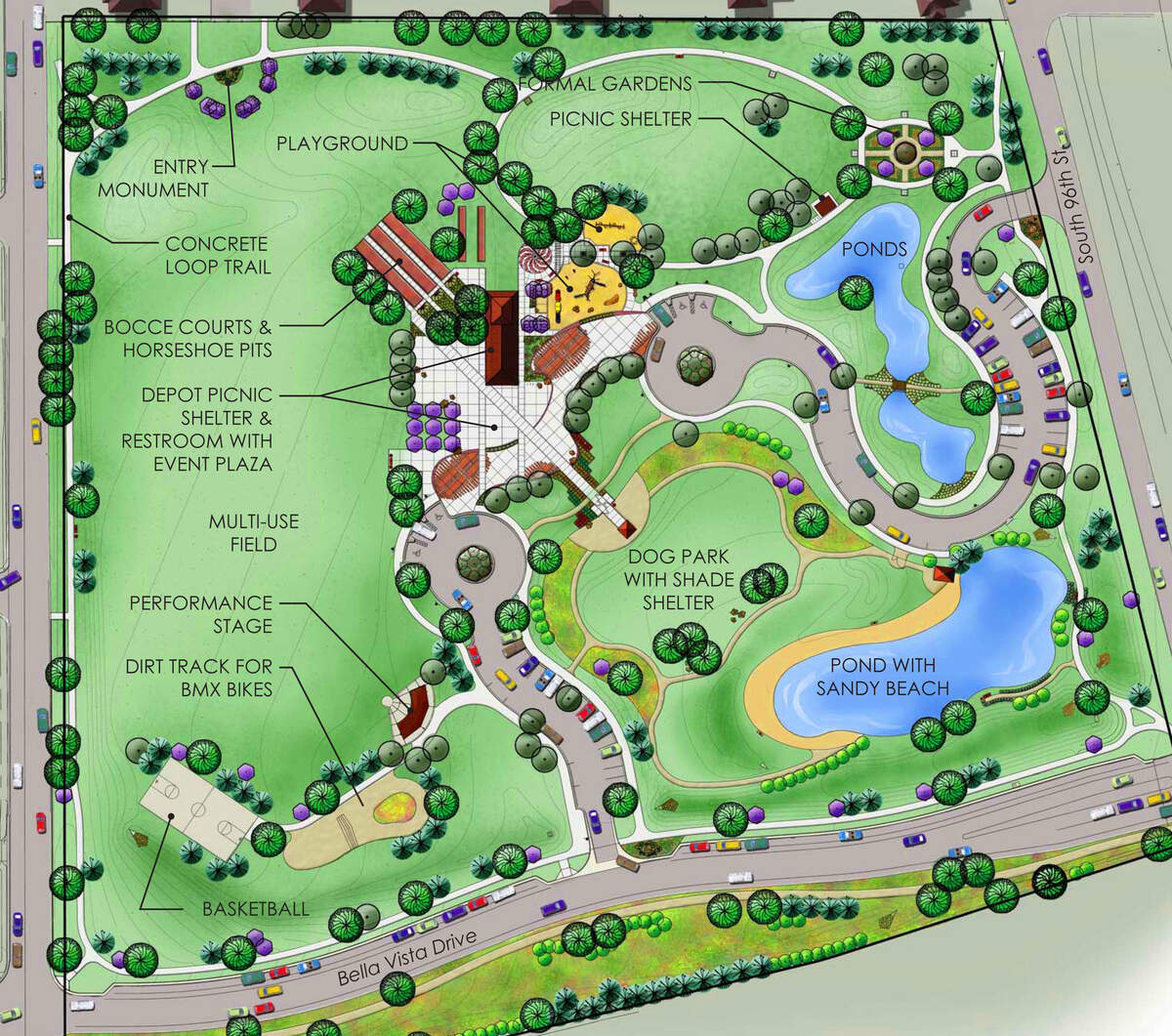

0 thoughts on “What Is Forest Zoning?”